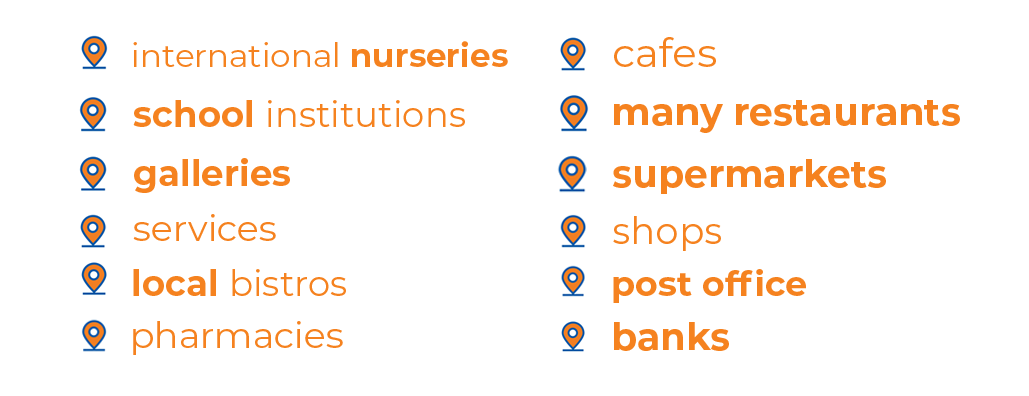Do you want to go to the castle? You have the opportunity. This area is dominated by Prague Castle ("Pražský hrad"), with a dazzling view of the city. In the place there is a Gothic Cathedral of St. Vitus - "Katedrála Sv. Víta" (consisting of three naves and a rich support system with a high choir), or the Basilica of St. George ("bazilika sv. Jiří"), one of the oldest churches in the Czech Republic. You will also discover a Baroque riding school - Prague Castle Riding School ("Jízdárna Pražského hradu"), which is located in the wider area of the castle. The famous Golden Lane ("Zlatá ulička") offers colorful houses with historical exhibits and souvenir shops. Most of the district consists of noble historic palaces and there are many other attractions that you can use: romantic nooks, quiet places and beautiful lookout towers. "Hradčany" was an independent part of the city until 1784, when it became part of the unified royal capital of Prague.
A beautiful part is Hradčanské náměstí (square), where you can get more directions - from Prague Castle (east), via "Zámecké schody" (south), via "Ke hradu" street (south), via "Radnické schody" (south), via "Loretánská" street (west), across "Kanovnická" street (west). The castle stairs connect "Thunovská" street ("Malá Strana" - Lesser Town) with the Castle Ramp ("Hradčanské náměstí"). The town hall stairs connect the intersection of "Ke hradu", "Nerudova" and "Úvoz" streets ("Malá Strana") with "Loretánská" street and "Hradčanské náměstí" ("Hradčany").
The Baroque building of the Archbishop's Palace, from the 17th century, is the seat of the Archbishops of Prague and is located on "Hradčanské náměstí" (square) - nearby the castle gate. It's also decorated with the Renaissance "Martinický palác" (palace), consisting of four wings and the main facade (facing the square and one side wing is located in "Kanovnická" street).
The area is enriched with various restaurants, cafes, galleries (eg the National Gallery Prague - Schwarzenberg Palace - "Národní galerie Praha - Schwarzenberský palác" or the National Gallery Prague - Salm Palace - "Národní galerie Praha – Salmovský palác"), hotels. Hradčany district is suitable for artistic souls, lovers of architecture, families with children, couples, working people. It's an ideal place for family living or investment purposes.












